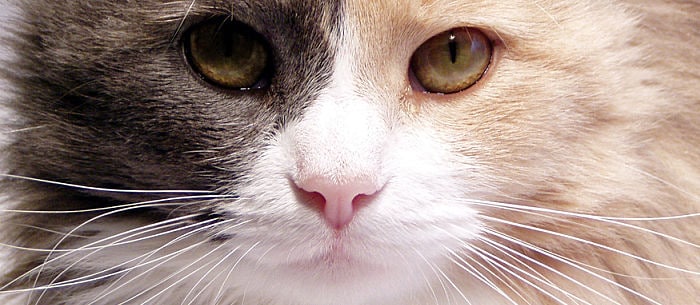Your cat has been diagnosed with stomatitis, and you aren’t quite sure what that means. All you know is your cat is in horrible discomfort, especially when eating, and that the vet is looking into underlying causes. Luckily, there are treatment options that often work well.
Stomatitis in cats is a condition that occurs when the mucous membranes of a cat’s mouth become inflamed and swollen. You might suspect your cat has stomatitis if you see that your cat is producing excess saliva, keeping his mouth slightly open and refusing to groom and eat normally. Your cat’s mouth or breath may smell foul, and you may see food dropped around the food bowl. In severe cases, you may notice that his gums are bleeding or the inside of his mouth is red and inflamed.
It’s unclear what causes stomatitis in cats. Because this condition is more commonly seen in certain breeds, such as Siamese, Maine coon and short-haired cats, these breeds may have a genetic predisposition toward the condition, says Dr. Hayley Adams, experienced veterinarian, conservationist and founder of the Silent Heroes Foundation in Saint Simons Island, Georgia. One theory is that the cat’s immune system may be reacting to oral plaque, causing severe inflammation as an immune reaction.
Stomatitis may also be caused by a virus, such as feline calicivirus (FCV), feline immunodeficiency virus (FIV) and feline leukemia virus (FeLV), says Dr. Johnathon R. (Bert) Dodd, a clinical professor of dentistry at Texas A&M University’s department of Small Animal Clinical Sciences in College Station, Texas. Other contributing factors may include a nutritional deficiency or immunosuppression.
Coping Strategies
If your cat has stomatitis, it’s hard to watch her suffer. You wish you could do something to eliminate the discomfort. “The most successful treatment to date is removal of the teeth to eliminate the source of the plaque,” says Dr. Dodd. “This will include all the premolars and molars and sometimes even the canines and incisors.” He notes that more than 60 percent of cats will respond favorably, while the remainder will require periodic medical management. This will only work if the stomatitis seems to be an immune system response to the plaque buildup. In these cases, the sooner the extraction occurs after the diagnosis, the higher the chance of the treatment being successful.
If the stomatitis seems to be a secondary bacterial infection, your veterinarian may prescribe antibiotics as well as anti-inflammatory medications to decrease the swelling. This should reduce your cat’s pain and improve his appetite. Oral rinses, squirted into the cat’s mouth toward his cheek by your or the pet sitter, may also be helpful to manage the swelling.
Prevention
Unfortunately, there isn’t much you can do to prevent stomatitis, agree Drs. Dodd and Adams. Make sure your cat has regular vet check-ups, as well as regular dental care to remove plaque or tartar buildup. Vaccinate your cat for FeLV and FIV to eliminate that contributing factor. Most importantly, if you see any symptoms and suspect stomatitis, visit your vet as soon as possible to get a diagnosis and start any recommended treatments.
Want more info on cat health? Read Understanding FIV in Cats.
Keren Perles is a freelance writer who specializes in writing about health and wellness, as well as parenting and education.
*This article is for general informational purposes only. It is not intended nor implied to be providing medical advice and is not a substitute for such advice. The reader should always consult a health care provider concerning any medical condition or treatment plan. Neither Care.com nor the author assumes any responsibility or liability with respect to use of any information contained herein.

